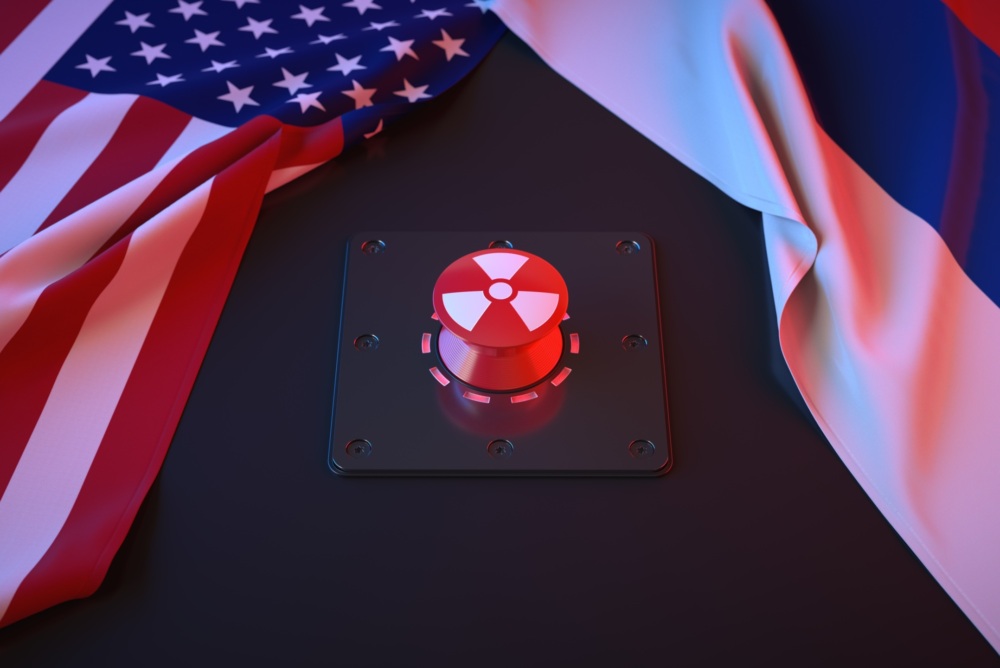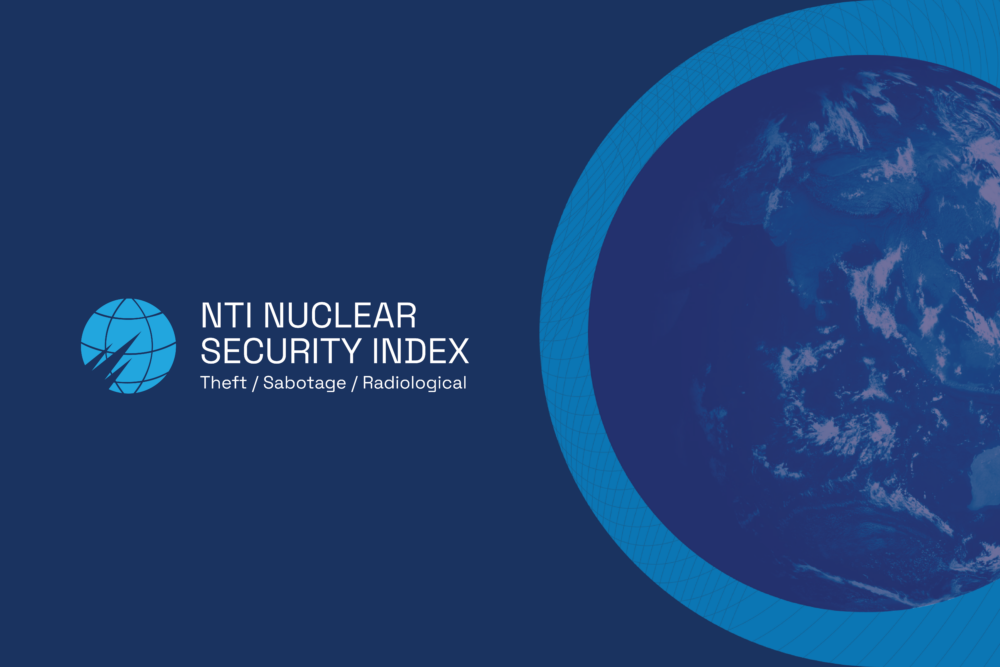
Sam Nunn
Co-Founder and Co-Chair, NTI
As long as there has been war, there have been efforts to deter actions a nation considers threatening. Until fairly recently, this meant building a military establishment capable of intimidating the adversary, defeating him or making his victory more costly than the projected gains. This, with conventional weapons, took time. Deterrence and war strategy were identical.
The advent of the nuclear weapon introduced entirely new factors. It was possible, for the first time, to inflict at the beginning of a war the maximum casualties. The doctrine of mutual assured destruction represented this reality. Deterrence based on nuclear weapons, therefore, has three elements:
Since the first use of nuclear weapons against Japan, neither of the superpowers, nor any other country, has used nuclear weapons in a war. A gap opened between the psychological element of deterrence and the risks most leaders were willing to incur. U.S. defense leaders made serious efforts to give the president more flexible options for nuclear use short of global annihilation. They never solved the problem, and it was always recognized that Washington and Moscow both held the keys to unpredictable and potentially catastrophic escalations.
As a result, nuclear deterrence was useful in preventing only the most catastrophic scenarios that would have threatened our survival. But even with the deployment of thousands of nuclear weapons on both sides of the Iron Curtain, the Soviet moves into Hungary in 1956 and Czechoslovakia in 1968 were not deterred. Nor were the numerous crises involving Berlin, including the building of the Wall in 1961, or major wars in Korea and Vietnam, or the Soviet invasion of Afghanistan in 1979. In the case of the Soviet Union, nuclear weapons did not prevent collapse or regime change.
Today, the Cold War is almost 20 years behind us, but many leaders and publics cannot conceive of deterrence without a strategy of mutual assured destruction. We have written previously that reliance on this strategy is becoming increasingly hazardous. With the spread of nuclear weapons, technology, materials and know‐how, there is an increasing risk that nuclear weapons will be used.
It is not possible to replicate the high‐risk stability that prevailed between the two nuclear superpowers during the Cold War in such an environment. The growing number of nations with nuclear arms and differing motives, aims and ambitions poses very high and unpredictable risks and increased instability.
From 1945 to 1991, America and the Soviet Union were diligent, professional, but also lucky that nuclear weapons were never used. Does the world want to continue to bet its survival on continued good fortune with a growing number of nuclear nations and adversaries globally? Can we devise and successfully implement with other nations, including other nuclear powers, careful, cooperative concepts to safely dismount the nuclear tiger while strengthening the capacity to assure our security and that of allies and other countries considered essential to our national security?
Recently, the four of us met at the Hoover Institution with a group of policy experts to discuss the possibilities for establishing a safer and more comprehensive form of deterrence and prevention in a world where the roles and risks of nuclear weapons are reduced and ultimately eliminated. Our broad conclusion is that nations should move forward together with a series of conceptual and practical steps toward deterrence that do not rely primarily on nuclear weapons or nuclear threats to maintain international peace and security.
The first step is to recognize that there is a daunting new spectrum of global security threats. These threats include chemical, biological and radiological weapons, catastrophic terrorism and cyber warfare, as well as natural disasters resulting from climate change or other environmental problems, and health‐related crises. For the United States and many other nations, existential threats relating to the very survival of the state have diminished, largely because of the end of the Cold War and the increasing realization that our common interests greatly exceed our differences. However, an accident or mistake involving nuclear weapons, or nuclear terrorism fueled by the spread of nuclear weapons, nuclear materials, and nuclear know‐how, is still a very real risk. An effective strategy to deal with these dangers must be developed.
The second step is the realization that continued reliance on nuclear weapons as the principal element for deterrence is encouraging, or at least excusing, the spread of these weapons, and will inevitably erode the essential cooperation necessary to avoid proliferation, protect nuclear materials and deal effectively with new threats.
Third, the U.S. and Russia have no basis for maintaining a structure of deterrence involving nuclear weapons deployed in ways that increase the danger of an accidental or unauthorized use of a nuclear weapon, or even a deliberate nuclear exchange based on a false warning. Reducing the number of operationally deployed strategic nuclear warheads and delivery vehicles with verification to the levels set by the New Start Treaty is an important step in reducing nuclear risks. Deeper nuclear reductions and changes in nuclear force posture involving the two nations should remain a priority. Further steps must include short‐range tactical nuclear weapons.
Fourth, as long as nuclear weapons exist, America must retain a safe, secure and reliable nuclear stockpile primarily to deter a nuclear attack and to reassure our allies through extended deterrence. There is an inherent limit to U.S. and Russian nuclear reductions if other nuclear weapon states build up their inventories or if new nuclear powers emerge.
It is clear, however, that the U.S. and Russia—having led the nuclear buildup for decades—must continue to lead the build‐down. The U.S. and its NATO allies, together with Russia, must begin moving away from threatening force postures and deployments including the retention of thousands of short‐range battlefield nuclear weapons. All conventional deployments should be reviewed from the aspect of provocation. This will make America, Russia and Europe more secure. It will also set an example for the world.
Fifth, we recognize that for some nations, nuclear weapons may continue to appear relevant to their immediate security. There are certain undeniable dynamics in play—for example, the emergence of a nuclear‐armed neighbor, or the perception of inferiority in conventional forces—that if not addressed could lead to the further proliferation of nuclear weapons and an increased risk they will be used. Thus, while the four of us believe that reliance on nuclear weapons for deterrence is becoming increasingly hazardous and decreasingly effective, some nations will hesitate to draw or act on the same conclusion unless regional confrontations and conflicts are addressed. We must therefore redouble our efforts to resolve these issues.
Achieving deterrence with assured security will require work by leaders and citizens on a range of issues, beginning with a clearer understanding of existing and emerging security threats. The role of non‐ nuclear means of deterrence to effectively prevent conflict and increase stability in troubled regions is a vital issue. Changes to extended deterrence must be developed over time by the U.S. and allies working closely together. Reconciling national perspectives on nucleardeterrence is a challenging problem, and comprehensive solutions must be developed. A world without nuclear weapons will not simply be todayʹs world minus nuclear weapons.
Nations can, however, begin moving now together toward a safer and more stable form of deterrence. Progress must be made through a joint enterprise among nations, recognizing the need for greater cooperation, transparency and verification to create the global political environment for stability and enhanced mutual security. Ensuring that nuclear materials are protected globally in order to limit any countryʹs ability to reconstitute nuclear weapons, and to prevent terrorists from acquiring the material to build a crude nuclear bomb, is a top priority.
Moving from mutual assured destruction toward a new and more stable form of deterrence with decreasing nuclear risks and an increasing measure of assured security for all nations could prevent our worst nightmare from becoming a reality, and it could have a profoundly positive impact on the security of future generations.
Mr. Shultz was secretary of state from 1982 to 1989. Mr. Perry was secretary of defense from 1994 to 1997. Mr. Kissinger was secretary of state from 1973 to 1977. Mr. Nunn is former chairman of the Senate Armed Services Committee.
Your are currently on
Sign up for our newsletter to get the latest on nuclear and biological threats.
There is a critical need for a global diplomatic approach to address growing cyber risks, including, where possible, through cooperation between the United States and Russia.
“The bottom line is that the countries and areas with the greatest responsibility for protecting the world from a catastrophic act of nuclear terrorism are derelict in their duty,” the 2023 NTI Index reports.
Christopher Nolan's Oppenheimer is the most high-profile film about nuclear weapons ever made.


